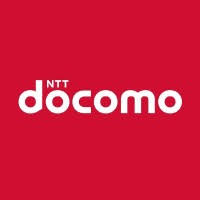NTT Docomo noted that the new offering will be initially available in certain areas of the Tokyo and Kanagawa prefectures
Japanese operator NTT Docomo announced plans to commercially deploy New Radio dual connectivity technology using three spectrum bands to deliver what it claims will be the fastest downlink rates in Japan, up to 6.6 Gbps, using 5G Standalone (SA) architecture.
In a release, NTT Docomo noted that the new offering, which uses two sub-6GHz bands (3.7 GHz and 4.5 GHz) and mmWave (28 GHz band), will initially be offered in specific zones within the SA coverage areas in Tokyo and Kanagawa prefectures starting on August 1, with plans for a gradual expansion.
Docomo also highlighted that the utilization of the new commercial offering requires a 5G SA subscription, a compatible device as well as a compatible SIM card. Services must be used within a 5G SA coverage area, it added.
In December 2021, the Japanese telco began offering 5G SA services and as of August 2022, combined one of two sub-6 GHz frequencies with the millimeter-wave band to deliver maximum download speeds of 4.9 Gbps and upload speeds of 1.1 Gbps. With this latest development, both sub-6 frequencies will be combined with the millimeter-wave band for even faster transmission speeds, Docomo said.
“Going forward, Docomo will continue to broaden its range of millimeter-wave band-compatible devices and extend service coverage in response to customer needs, with the goal of providing customers with enhanced convenience and quality of life,” the telco said.
Earlier this year, NTT Docomo had selected Amazon Web Services (AWS) to commercially deploy its nationwide 5G Open Radio Access Network (O-RAN) in Japan.
Under the terms of the agreement, Docomo will use AWS to deploy Amazon Elastic Kubernetes Service Anywhere (Amazon EKS Anywhere), a container management software, for its 5G O-RAN, with the aim of simplifying network operation with automated cluster management tools. AWS explained that this will enable the Japanese operator to easily run and optimize its 5G Open RAN.
In November 2023, Finnish vendor Nokia had announced that NTT Docomo was deploying the former’s O-RAN compliant 5G AirScale baseband solution, including centralized unit (CU) and distributed unit (DU) software, in its commercial network in Japan.
Nokia said that this solution will enable NTT Docomo to pursue a multi-supplier strategy, giving the Japanese telco the option to connect with Open Radio Units (RU) delivered by other suppliers.
Nokia had said it will deploy its fully O-RAN-compliant 5G AirScale baseband solution in Docomo’s commercial network.

